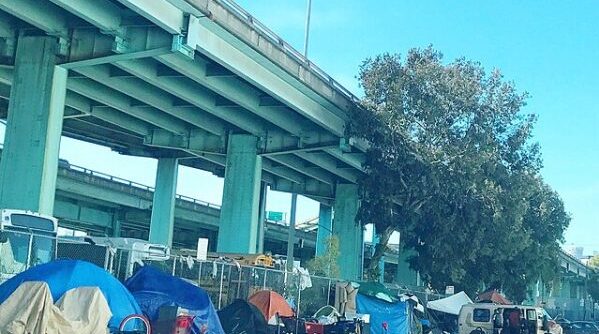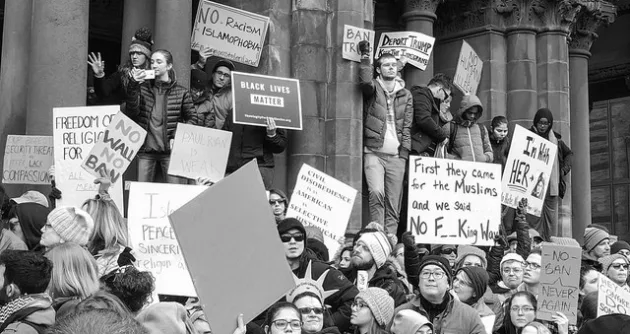The timely book from The New Press highlights powerful grassroots campaigns and strategies from across the continent. It includes a chapter on CELDF’s efforts to ‘decolonize the law.’
Collecting interviews, journalistic reports, first-person essays, and artwork, editor Audrea Lim touches on a wide range of topics, including the history of the White Earth Nation’s food sovereignty campaigns, a fight to protect water from profiteers in Milwaukee, poor sanitation in rural communities, climate preparedness in Savannah, Georgia, and opposition to industries that threaten the health and well being of communities who are disproportionately Black, Indigenous, and people of color. The book showcases the racial, socioeconomic, and cultural diversity of the modern-day environmental justice movement. Stories give a behind-the-scenes look at organizing and strategies that have been in the works for years and decades.
The book includes a chapter on “CELDF’s Effort to Decolonize the Law.” The chapter highlights lawmaking campaigns from Denver, CO, the White Earth Band of Ojibwe, Toledo, OH, Spokane, WA, and Mora County, NM. It incorporates perspective on what it means to “decolonize law” from Rebecca Tsosie, a constitutional and Indigenous law scholar of Yaqui descent, and Phil Bluehouse, a member of the Navajo Commission on Self-Governance and former director of the Navajo Judicial Peacemaking Program. CELDF’s Simon Davis-Cohen contributed the chapter.
The New Press is teaming up with The New School and Fix, Grist’s Solutions Lab to highlight stories from the book and deepen the conversation. The goal is to make this book a tool to help weave movements together and to uplift local stories of environmental justice, action and thinking. Visit their interactive website: https://theworldweneed.com/
“The rich stories and images collected in The World We Need take us on a journey to seemingly disparate corners of the country—from Alaska to Puerto Rico to New York City. Yet they are woven together in the movement for environmental and climate justice. Together, these stories remind us that environmental justice is intersectional—meaning that it can only be achieved by dismantling multiple, intersecting forms of systemic oppression—and that efforts to build a new world can bring profound hope and joy. It’s a movement that seeks to transform the world, not just to clean it up. It both challenges the root causes of injustice and manifests radical, alternative futures.”
—from the book’s introduction, Radical Resistance and Future Imaginaries for Environmental Justice, by Ana Isabel Baptista
“[An] illuminating anthology. . . . Lim crisscrosses the country and selects her profile subjects wisely, resulting in an invigorating survey that breaks down stereotypes about tree-hugging coastal elites and highlights just how much change can be achieved at the local level. Progressive policy makers and environmental activists should take note.”
—Publishers Weekly
“This book is a testament to the idea that choosing people over profits is environmental justice.”
—Catherine Coleman Flowers, author of Waste: One Woman’s Fight Against America’s Dirty Secret and a 2020 MacArthur “genius” fellow
The following is an excerpt from The New Press:
The environmental movement already cuts a broader swath than we might typically be led to believe and it can be richer and deeper if it is more inclusive—not only of identities but of other social justice struggles. The World We Need displays a tapestry of grassroots groups and movements tackling environmental and climate issues today, often in conjunction with other pressing societal issues that aren’t always linked with environmental advocacy: racial justice, prisons, community development, and gentrification. The quest for environmental justice (EJ) also contains a deep desire to be free from forces that deny the dignity and flourishing of individuals and communities, best seen in the struggles for Indigenous sovereignty, cultural survival, and community cohesion and health.
The EJ movement emerged in the 1980’s to address a persistent problem in the mainstream environmental movement: racism it had inherited from its conservationist forebears. The World We Need includes people and stories from the EJ world, but also shows a landscape of activists, groups and campaigns that have evolved and grown from the EJ movement’s original focus and critiques. Their movements and struggles seek to protect the air, water, ecosystems, wildlife, and land, but many don’t call themselves “environmentalists”; protecting their environments, whether the Klamath River or a Brooklyn brownstone block, is simply part of protecting the health and livelihoods of their communities.
Many of the groups and activists profiled in The World We Need, scattered across North America and with roots as far away as Laos, have understood for decades that the pollution and environmental destruction besieging their communities—the effects of industrial development, like pipelines, factory farms, or dams—were symptoms of America’s deeper dysfunctions. Typically small, underfunded grassroots groups are devising creative new tactics, building sustainable projects to transform local economies, and organizing people long overlooked by the environmental movement—and changing its face along the way.
About the Editor: Audrea Lim is a Brooklyn-based journalist who writes for the New Yorker, Rolling Stone, the New Republic, Harpers, the Guardian, and others. She has contributed regular dispatches from the front-lines of the climate justice movement for the “Taking Heat” series, a project of The Nation and the Food & Environment Reporting Network.


